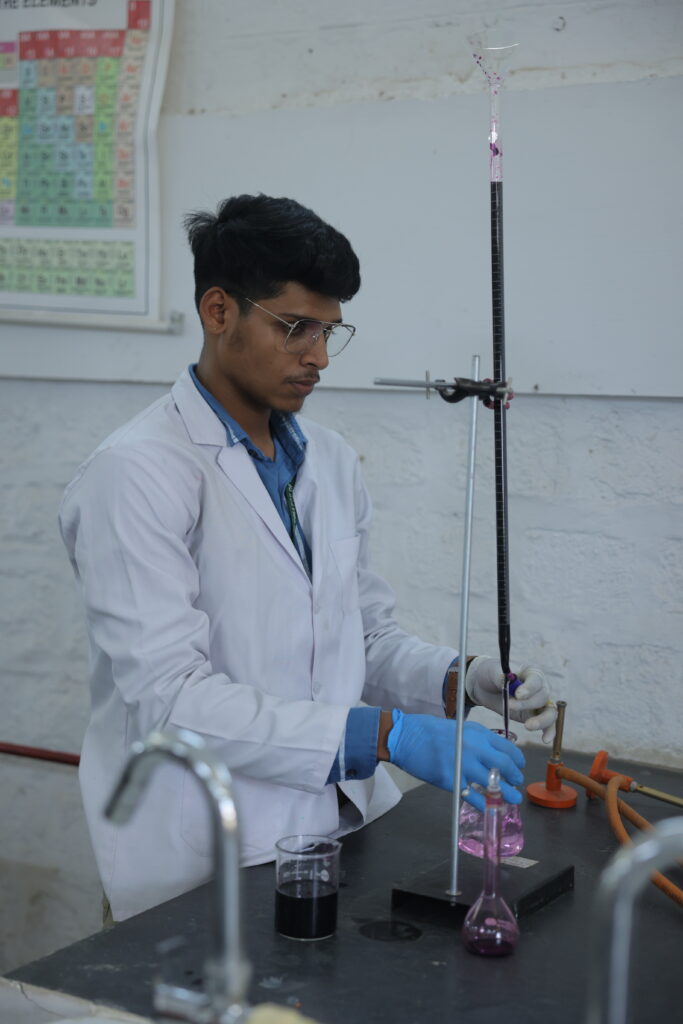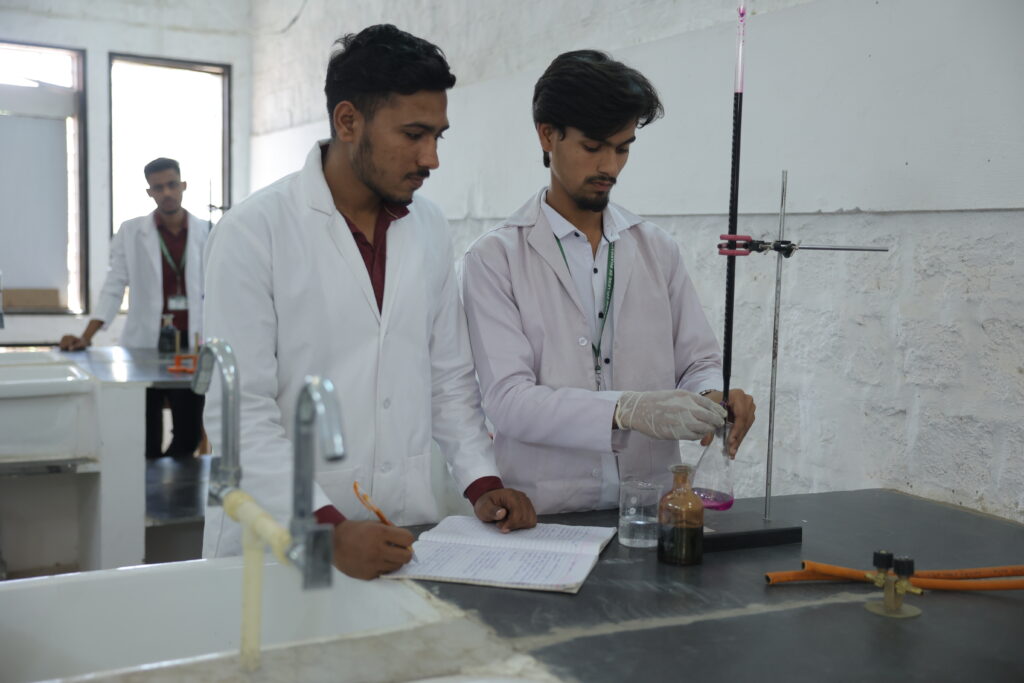PHARMACEUTICAL INORGANIC CHEMISTRY
The Inorganic Chemistry Lab is essential for understanding the properties, synthesis, and analysis of inorganic compounds. It involves qualitative and quantitative analysis, preparation of coordination compounds, and the study of reaction mechanisms of inorganic substances.
Common Experiments in Inorganic Chemistry Lab:
1. Qualitative Analysis:
• Identification of cations (e.g., Na⁺, K⁺, Ca²⁺, Fe³⁺, Cu²⁺).
• Identification of anions (e.g., Cl⁻, SO₄²⁻, NO₃⁻).
2. Quantitative Analysis:
• Gravimetric analysis (determination of metal content).
• Volumetric analysis (acid-base, redox, complexometric titrations).
3. Preparation of Inorganic Compounds:
• Synthesis of coordination complexes (e.g., Potassium tris(oxalato)ferrate(III)).
• Preparation of metal oxides and salts.
4. Study of Inorganic Reactions:
• Oxidation-reduction reactions.
• Precipitation and solubility studies.
5. Spectroscopic and Instrumental Techniques:
• UV-Vis spectroscopy for metal complexes.
• Conductometry and potentiometry for ionic studies.
Safety Measures in the Lab:
• Wear lab coats, gloves, and safety goggles.
• Handle acids, bases, and toxic chemicals with care.
• Proper disposal of chemical waste.



